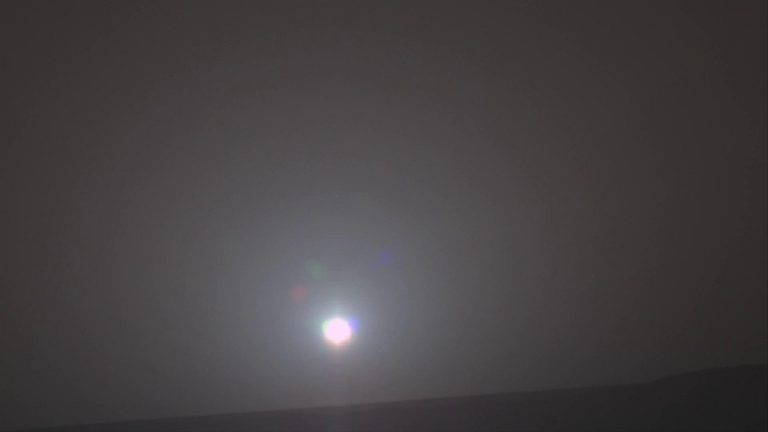
Feb 20, 2018
It’s been a time of milestones for Mars rovers lately! Last month (on January 26th, 2018), NASA announced that the Curiosity rover had spent a total of 2,000 days on Mars, which works out to 5 years, 5 months and 21 days. This was especially impressive considering that the rover was only intended to function on the Martian surface for 687 days (a little under two years).
But when it comes to longevity, nothing has the Opportunity rover beat! Unlike Curiosity,which relied on a Multi-Mission Radioisotope Thermoelectric Generator (MMRTG) for power, the solar-powered Opportunity recently witnessed its five-thousandth sunrise on Mars. This means that the rover has remained in continuous operation for 5000 sols, which works out to 5137.46 Earth days.
This five-thousandth sunrise began on Friday, Feb. 16th, 2018 – roughly 14 Earth years (and 7.48 Martian years) after the rover first landed. From its position on the western rim of the Endeavour Crater, the sunrise appeared over the basin’s eastern rim, about 22 km (14 mi) away. This location, one-third of the way down “Perseverance Valley”, is more than 45 km (28 mi) from Opportunity’s original landing site.
This is especially impressive when you consider that the original science mission was only meant to last 90 sols (92.47 Earth days) and NASA did not expect the rover to survive its first Martian winter. And yet, the rover has not only survived all this time, it continues to send back scientific discoveries from the Red Planet. As John Callas, the Opportunity Project Manager at NASA’s Jet Propulsion Laboratory, explained in a NASA
“Five thousand sols after the start of our 90-sol mission, this amazing rover is still showing us surprises on Mars… We’ve reached lots of milestones, and this is one more, but more important than the numbers are the exploration and the scientific discoveries.”
For instance, the rover has provided us with 225,000 images since its arrival, and revealed that ancient Mars was once home to extensive groundwater and surface water. Beginning in 2008, it began working its way across the Endeavour Crater in order to get a glimpse deeper into Mars’ past. By 2011, it had reached the crater’s edge and confirmed that mineral-rich water once flowed through the area.
At present, researchers are using Opportunity to investigate the processes that shaped Perseverance Valley, an area that descends down the slope of the western rim of Endeavour Crater. Here too, Opportunity has learned some fascinating things about the Red Planet. For instance, the rover has conducted observations of possible “rock stripes” in the valley, which could be indicative of its valley’s origin.
These stripes are of interest to scientists because of the way they resemble rock stripes that appear on mountain slopes here on Earth, which are the result of repeated cycles of freezing and thawing on wet soil. On Mauna Kea, for example, soil freezes every night, but is often dry due to the extreme elevation. This causes soils that have high concentrations of silt, sand and gravel to expand, pushing the larger particles up.
These particles then form stripes as they fall downhill, or are moved by wind or rainwater, and cause the ground to expand less in this space. This process repeats itself over and over, creating a pattern that leads to distinct stripes. As Opportunity observed, there are slopes within the Perseverance Valley where soil and gravel particles appear to have formed into rows that run parallel to the slope, alternating between rows that have more and less gravel.
In the case of the Perseverance Valley’s stripes, scientists are not sure how they formed, but think they could be the result of water, wind, downhill transport, other processes, or a combination thereof. Another theory posits that features like these could be the result of changes in Mars tilt (obliquity) which happen over the course of hundreds of thousands of years.










